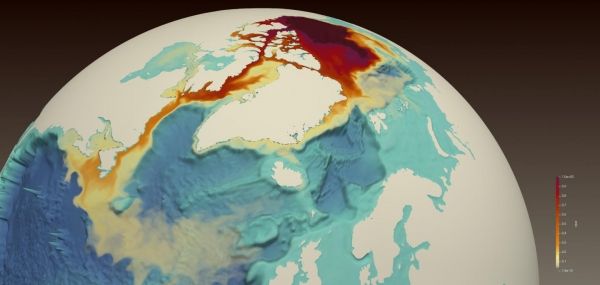The Beaufort Sea, the Arctic Ocean’s largest freshwater reservoir, has increased its freshwater content by 40 percent over the last two decades, putting global climate patterns at risk. A rapid release of this freshwater into the Atlantic Ocean could wreak havoc on the delicate climate balance that dictates global climate.
“A freshwater release of this size into the subpolar North Atlantic could impact a critical circulation pattern, called the Atlantic Meridional Overturning Circulation, which has a significant influence on northern-hemisphere climate,” said Wilbert Weijer, a Los Alamos National Laboratory author on the project.
A joint modeling study by Los Alamos researchers and collaborators from the University of Washington and NOAA dove into the mechanics surrounding this scenario. The team initially studied a previous release event that occurred between 1983 and 1995, and using virtual dye tracers and numerical modeling, the researchers simulated the ocean circulation and followed the spread of the freshwater release.
“People have already spent a lot of time studying why the Beaufort Sea freshwater has gotten so high in the past few decades,” said lead author Jiaxu Zhang, who began the work during her post-doctoral fellowship at Los Alamos National Laboratory in the Center for Nonlinear Studies. She is now at UW’s Cooperative Institute for Climate, Ocean and Ecosystem Studies. “But they rarely care where the freshwater goes, and we think that’s a much more important problem.”
Read more at DOE/Los Alamos National Laboratory
Image: Dye tracer released from the Beaufort Gyre region of the western Artic Ocea n indicates freshwater transport through the Canadian Arctic Archipelago into the western Labrador Sea, causing freshening there. (Credit: Francesca Samsel and Greg Abram (University of Texas at Austin). High-resolution version linked here: https://www.dropbox.com/s/8ad4665kzo5wm4x/featured_image_horizontal.png?dl=0)


